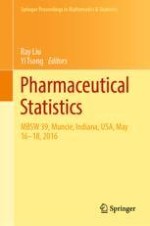2019 | OriginalPaper | Buchkapitel
Clinical Trial Designs to Evaluate Predictive Biomarkers: What’s Being Estimated?
verfasst von : Gene Pennello, Jingjing Ye
Erschienen in: Pharmaceutical Statistics
Aktivieren Sie unsere intelligente Suche, um passende Fachinhalte oder Patente zu finden.
Wählen Sie Textabschnitte aus um mit Künstlicher Intelligenz passenden Patente zu finden. powered by
Markieren Sie Textabschnitte, um KI-gestützt weitere passende Inhalte zu finden. powered by
